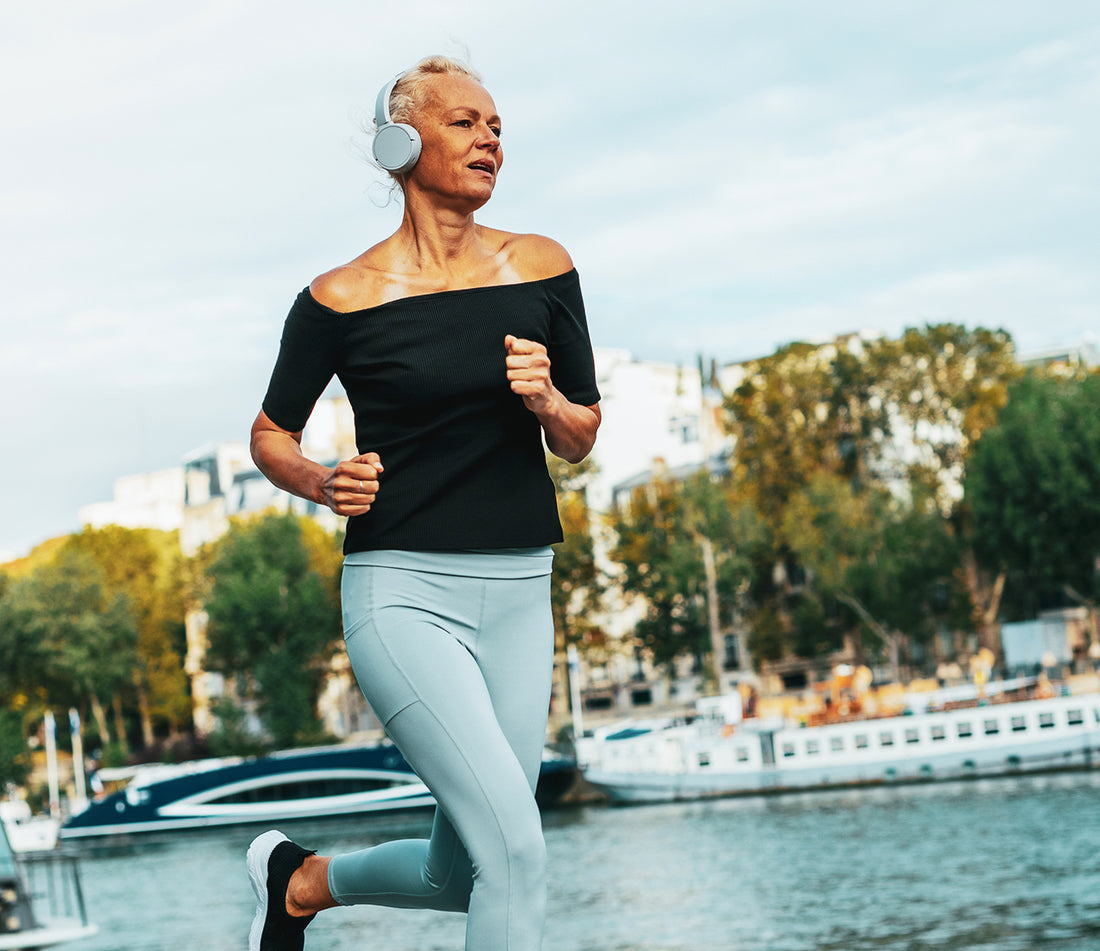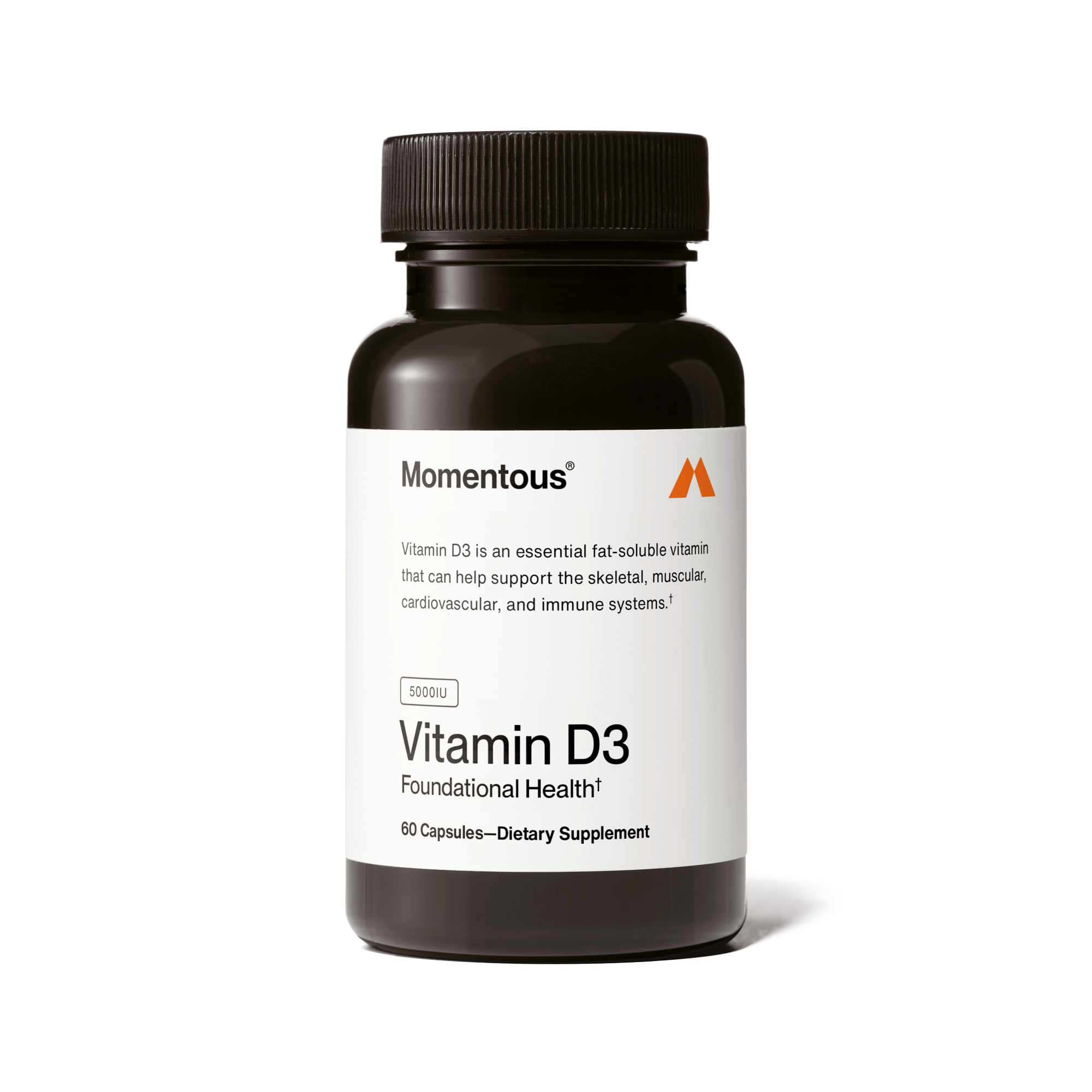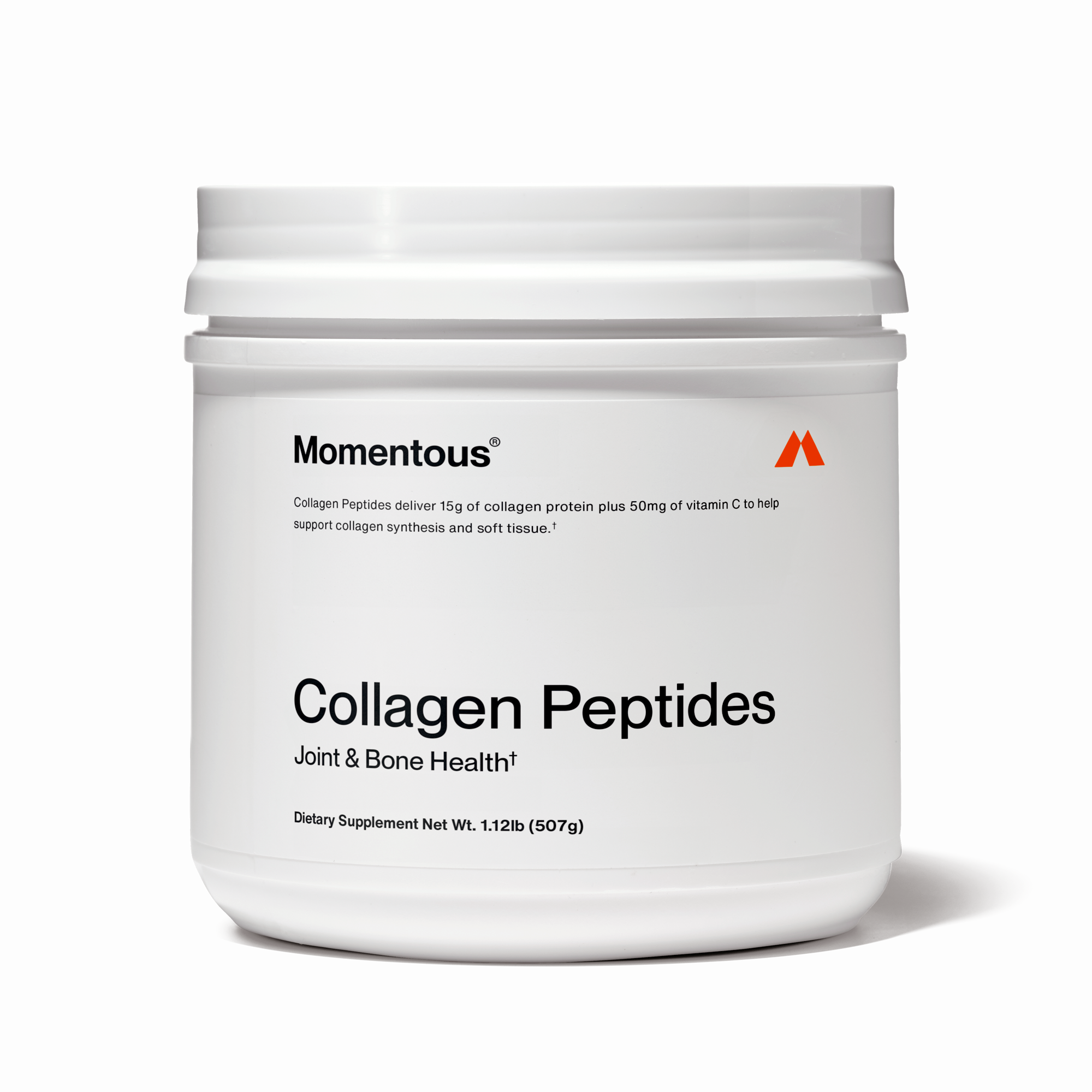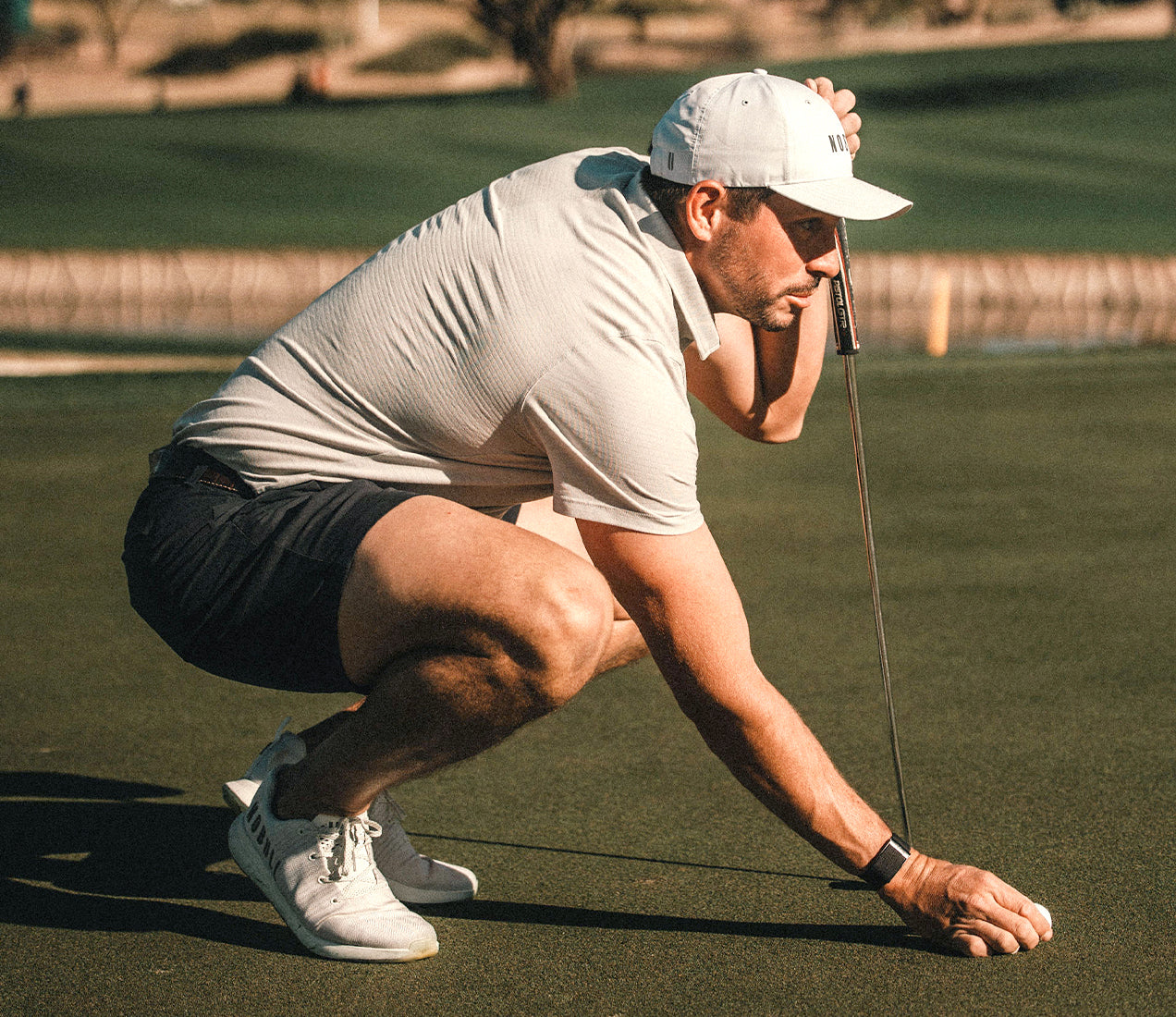High-strength D3 for bone + immune health
Grass-fed collagen plus FORTIGEL® to support joints + soft tissue
Dr. Stacy Sims can’t say it enough: Every woman will go through menopause. Yet we don’t talk about it enough, leaving many women unprepared for the changes to come. And it goes far beyond the reproductive system. Sims, an internationally renowned exercise physiologist and nutrition scientist, specializing in female hormones and performance, wants women everywhere to maintain their strength through menopause and beyond. Specifically, the strength of their muscles and bones.
As estrogen and progesterone levels drop during menopause, muscle mass and bone density are also dramatically reduced. But, women don’t have to let menopause slow them down. Sims explains how changing the way we exercise by boosting the intensity and reducing volume can help mitigate these menopause symptoms and keep every woman feeling her strongest.
Lift Heavy
Women are commonly told to do weight-bearing exercise to combat the effects of aging. But while great for the cardiovascular system, walking, running, and biking just aren’t enough to strengthen bones or build muscle. To do that, women need to do resistance training, preferably with weights heavy enough to be a challenge. Sims suggests 3 to 5 sets of 6 or fewer reps, with a full rest – two minutes or more – in between.
Prior to menopause, the hormones estrogen and progesterone are responsible for building muscle mass and strength and maintaining bone mineral density. Estrogen also increases the production of acetylcholine, a neurotransmitter that signals muscle contraction, and triggers the production of the motor protein myosin, which enables muscles to forcefully contract to generate power. “When estrogen and progesterone start to flatline, we need to find an external stress that is going to cause the same adaptive responses that these hormones used to create,” says Sims. “A stronger neuromuscular stimulus forces your body to recruit more muscle fibers for one muscle contraction, so building muscle becomes a central nervous system-driven activity instead of a hormone-driven activity.”
Women who don’t lift heavy weight can expect to lose 3% of their muscle mass every decade after age 30, and up to 50% of their muscle mass by age 80.
Jump
Plyometrics are exercises that involve explosive movements like jumping, hopping, or bounding. Think jump squats, jumping lunges, box jumps, skater bounds, bunny hops, or burpees. Sims explains that these impacts – whether big or small – generate important physiological changes and can help improve muscular strength, body composition, and bone health. Before menopause, estrogen and progesterone are responsible for creating new bone cells and increasing the density of the bone. After menopause, you need to force the body to adapt. “Creating a multi-directional stress on the bone itself causes and inflammatory response that causes the bone to respond and become stronger,” says Sims. “It becomes part of an immune response.” In fact, jumping just 20 times, twice per day, with 30 seconds of rest between jumping sessions was shown to increase bone density.
Sprint
Any woman going through menopause knows it becomes harder and harder to prevent weight gain. This, Sims explains, is because estrogen and progesterone are tightly tied to glucose regulation, and during menopause, women become more insulin-resistant. That means your body becomes less efficient at using blood glucose for energy. The pancreas makes more glucose to compensate, blood sugar levels go up, and so can the scale. “Sprint training creates an epigenetic change within our muscles that allows glucose to come in without insulin, which allows for better metabolic control,” says Sims. “That means improved burning of deep, visceral fat.” She further explains that sprint training leads to less overall oxidative stress, which keeps levels of the stress hormone cortisol in check; high cortisol levels can lead to weight gain, reduced muscle mass, and decreased bone density.
Sims says the best type of sprint training for menopausal women is super-short intervals of 30 seconds or less, done as hard as you can go; intervals longer than 60 seconds increase cortisol levels. She suggests Tabata workouts as a way to ease into sprint training: Go as hard as possible for 20 seconds, rest for 10 seconds, repeat for 8 rounds, and work up to completing 3 total rounds. And remember, “sprint” intervals can be done without running a step. “You can do burpees, kettlebell swings, or all-out efforts on the bike or elliptical,” Sims explains. “A sprint interval can be anything done at supramaximal intensity.”
What if You’ve Never Exercised Before?
“This is a question I get a lot,” Sims says. “You have to think about what you want to do for the rest of your life. It’s about taking a month, or three months, to phase into something you can do forever.” One benefit of being a beginner is that there is infinite room for improvement, but it’s essential you start with the basics. Sims suggests working with a trainer if you have that option, to ensure you are moving properly. Start with functional movements and lighter loads, and don’t add weight until your technique is sound. If you’ve just started a lifting program, an empty barbell will be heavy enough to drive adaptation. “It’s all relative,” says Sims.
What if You’re an Endurance Athlete?
Sims is a former Ironman triathlete, so she understands the desire to go long. Plus, it’s scientifically proven that women are built for endurance. However, training long and slow only makes you slow, and exercising for more than 60 minutes, even at a lower intensity, stimulates the release of cortisol, which, as mentioned above, can increase body fat. Sims suggests replacing some of your longer, steady-state workouts with sprint interval training. For example, you might do a posterior chain workout that includes exercises like deadlift and row variations, kettlebell swings, and box jumps. Then, follow with some sprint interval training on the treadmill immediately afterwards. “The fatigue from the lifting will improve your running form and give you better running economy,” Sims says. “But, it is really a mind-shift away from the mentality that you just need more time on your feet.”
Power Up With Protein
As we age, both men and women develop anabolic resistance, which means our bodies lose the ability to synthesize muscle protein from the protein we consume. Sims says women are at an extra disadvantage during menopause, when hormonal fluctuations cause them to break down muscle rather than build it. “We need to have an elevation of amino acids circulating to support the lean mass that we have, because that’s one of the first things to go,” says Sims. “And to get those amino acids, we need a big bolus of protein at each meal, and smaller doses throughout the day.” Sims suggests consuming 30 to 40 grams at each meal and 15 to 20 grams at each snack to increase muscle protein synthesis. Or, for the sake of simplicity, around one gram of protein per pound of body weight per day.
Sims also encourages women not to make the common mistake of reducing calories to lose weight during menopause. “One of the first things that happens when the body isn’t getting the energy it needs is that it starts storing body fat,” she says. And if, like many women, you struggle to consume enough calories throughout the day, hitting your protein goal is even more important; research shows that when in a caloric deficit, high protein intake will help you maintain lean muscle mass and lose body fat.
Supplements for Bone and Muscle Mass
As women enter menopause, many experience an increase in joint pain and stiffness. Sims suggests all women take a collagen supplement to support muscle mass and healthy, mobile joints. She recommends turmeric and omega three fatty acids to combat the increase in systemic inflammation that occurs during menopause, along with creatine to support lean muscle mass and vitamin D3 for strong bones.















